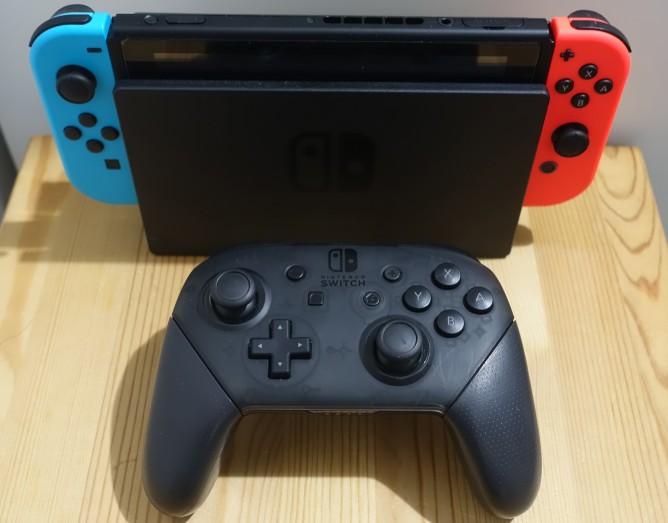
Nintendo Switch comes with a pair of controllers called joy-con attached to the main unit. We can use these joy-cons directly in handheld mode. We can detach the joy-cons to use the console in TV mode or tabletop mode, and these will automatically work as wireless controllers. Some games allow each joy-con to perform as individual controller, allowing more people in multiplayer. Each joy-con can be used in vertical or horizontal orientation, thanks to its shoulder buttons located in 2 places. Alternatively we can attach both joy-cons on the included comfort grip and both of them will act as one controller. Well sort of, if you can get used to its slightly awkward form factor. Sounds ideal with a lot of possibilities, yet these approach also have limitation: having to detach and reattach joy-cons several times a day turns out to be somewhat a turnoff. To detach a joy-con, we need to press a button at the back, and pressing the button will most likely make us pressing the + (or -) button right on the other side. I ended up using my console mostly on handheld mode, missing out the benefit of having modern game consoles with 3 play modes.
The final trigger happened when I started playing Super Smash Bros. Ultimate. Like any other fighting game, the use of controller is quite intense. After a while, I concluded that these joy-cons are simply not up to the task, at least not to my liking. So I started researching my options for dedicated controller for Nintendo Switch.
After reading several reviews from different sources, I decided to get the official Nintendo Switch Pro Controller. The all-black design is actually a plus for me. The shape of the controller give nice and firm grip, comfortable for longer gaming sessions. It has the same sets of buttons and analog sticks, arranged in asymmetric positioning somewhat similar to joy-con. Analog sticks are slightly bigger and longer. The 4 buttons on the right side are bigger and have soft pressing sensation that I like much better than the feeling of pressing joy-con buttons.
Shoulder buttons (L, R, XL and XR) are designed with much better shape and position. USB-C charging port and tiny connection button is located in the middle of the shoulder buttons. Home button and screenshot buttons are rather tiny, and the secret LED around home button that we can see in joy-con is also present in Pro Controller. The plus and minus button have the shape of small (and round) buttons in Pro Controller, making it my only complaint about this amazing controller. I much preferred the plus and minus buttons in joy-con because I can feel them with my thumb during game time. I have mistakenly pressing screenshot button when I wanted to press minus button more than I care to count.
Another issue I have with Pro Controller is that it gets slippery when my hands are sweaty. During the first few days of use, it almost jumped off my hand a few times. So I decided to get a cover for it with rubber-like material.
Nintendo Switch Pro Controller weighs 246 gr (or 308 gr after I put the third party cover). It supports motion control and vibration just like joy-cons. If you have some Amiibos, Pro Controller also has NFC touch area to detect them. We can see 4 small LEDs at the bottom to indicate the connection with Switch console, this is similar to what we can see in joy-con when not attached to the console.
Very nice accessory for Nintendo Switch. It delivers solid performance and much better gaming experience.

Leave A Comment